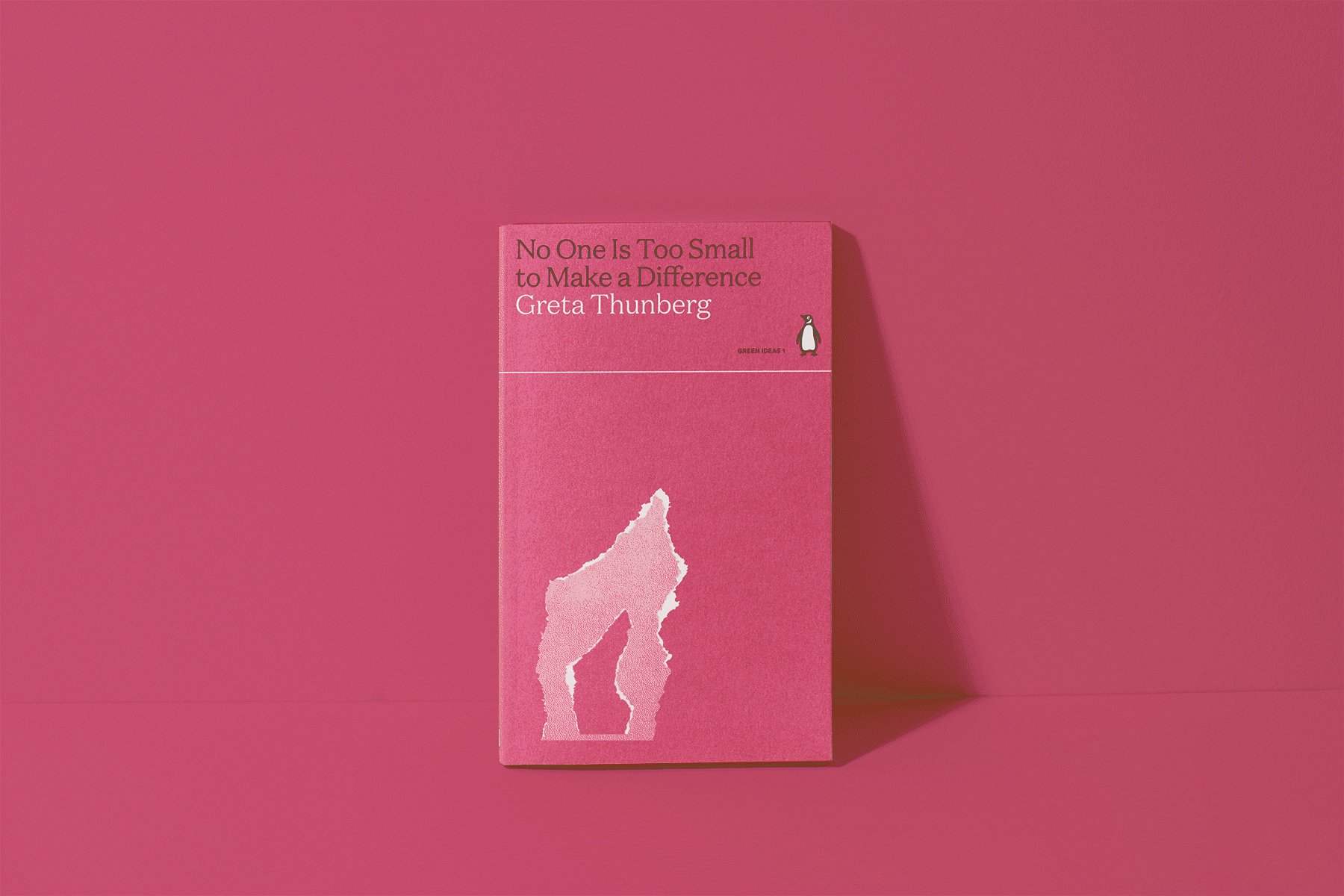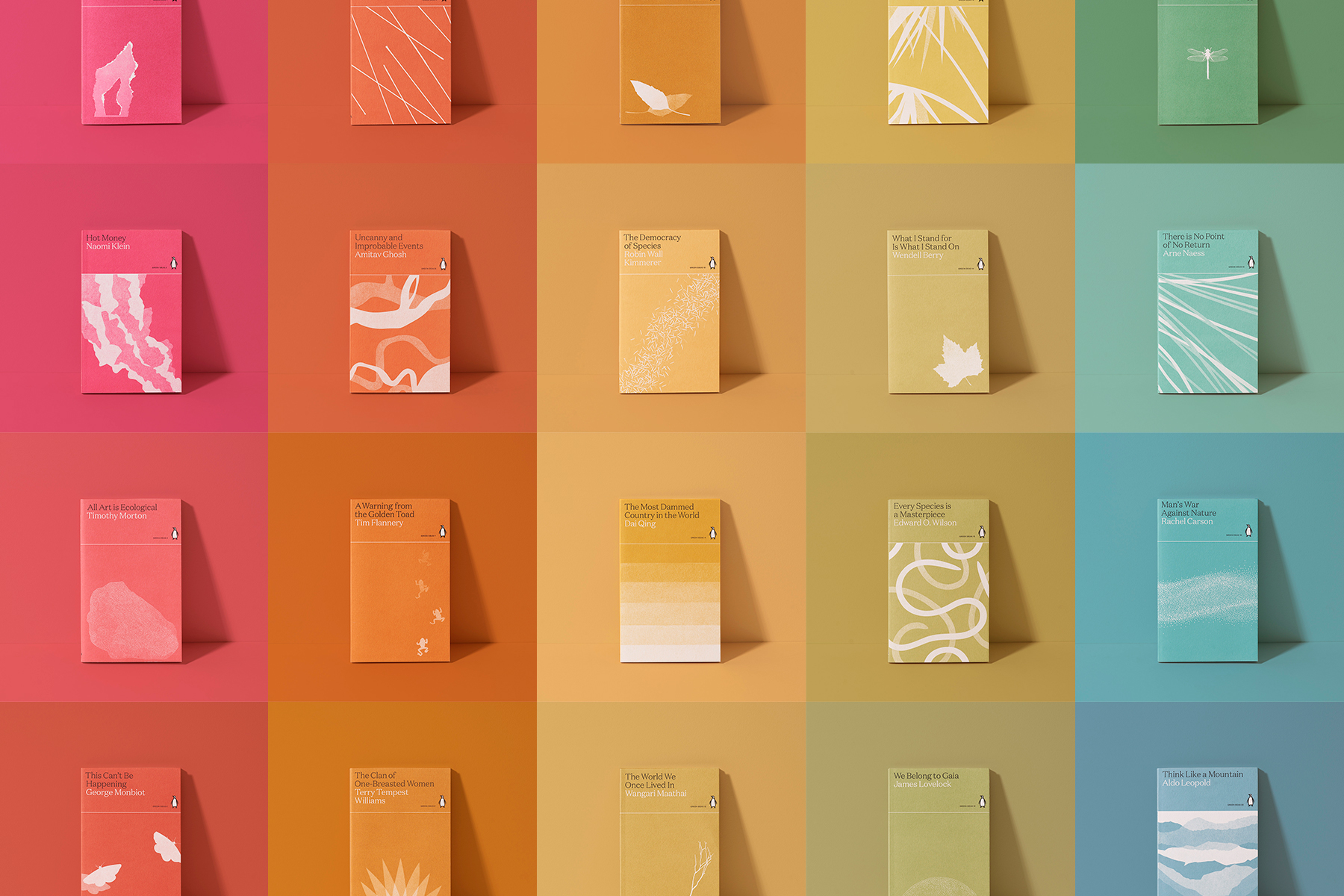
- Home |
- Search Results |
- Why Penguin Classics are going Green
Think of the “Classics”, and certain things come to mind: Charles Dickens, Charlotte Bronte, Tolstoy, perhaps. Titans of literature whose books have shaped the backbone of the fiction ever since. Not, necessarily, totemic non-fiction on the environment, some of which has been written as recently as 2020.
The Green Ideas series, however, is doing exactly that: putting important essays, thoughts and ideas on the climate crisis and what we can do to combat it into the literary canon. This summer, 20 small books from environmental writers and thinkers all over the world will form a vibrant and vital rainbow on shelves.
The series – something of a brainchild in the steps of the Penguin Great Ideas series – brings together voices ranging from 20th century American philosopher and conservationist Aldo Leopold to pioneering sustainable farmer Masanobu Fukuoka and teenage climate activist Greta Thunberg. In the process, these titles have become something far greater than the sum of their parts: a varied and persuasive web of world-changing ideas.
It was Rosie Glaisher, the publisher’s former publicity director who breathed life into the idea of a set of books dedicated to environmental writing. “This was just one of the very clear ideas as soon as it leapt at me,” she says. “I can see how it was building up for a long time: we have this amazing resource of writing from across the decades, only now there’s a whole world out there who wants these thoughts and ideas. It just seemed so apparent that it should be done.”
“We all feel that we live in a kind of new age of environmental discourse and concern,” says Sam Voulters, brand director for Penguin Classics. “The fact that there was already a canon of books about our environment that could be classified as classics was both intriguing and shocking."
'We’re in a moment when we’re all starting to understand that our impact on the planet might be far greater than we'd previously realised'
Glaisher was working at Viking in the Eighties when the imprint published The End of Nature, from which the series' An Idea Can Go Extinct is extracted. She remembers the book as something of a personal watershed: “He had the passion of somebody who understood what was going on, and for me it was the start of an understanding that things should change.”
“The End of Nature was a big turning point,” says Chloe Currens, who edited the series. “From the late Eighties, environmental writing as a subject sort of explodes. There’s an increased urgency to the conversation.”
Nevertheless, readers have never been as ready to engage with these ideas as now. “We’re in a moment when we’re all starting to understand that our impact on the planet might be far greater than we'd previously realised,” says Currens. And, as Glaisher points out, many of the ideas necessary to that understanding were in the archive: “I had an immediate sense that we already had this list.”
Gathering together the authors, texts and ideas from across seven decades and several continents was a collective effort, Currens explains. “Editors across the division, who have published many of these great thinkers, proposed a range of writers and selections to include, and the editorial assistants came up with some brilliant ideas, too. It was about gathering together as many different contenders as possible and thinking about what the most obvious starting points for the series would be.”
Buy the series
Rachel Carson’s The Silent Spring and Aldo Leopold’s A Sand County Almanac marked the beginning of publishing’s modern environmental movement. They were considered the origin point for the series, which is numbered according to the birth date of the author contributing. “You can hopefully sense a kind of timeline,” explains Currens, which allows readers to see how each new idea builds on the premise of that which came before it. “It feels like there’s an evolving ecosystem at work,” says Currens. “All the authors are connecting with, and responding to, the work of others.”
Soon, conversations started about how the Green Ideas series should be presented – and it’s here that an understanding of how much of a difference writing about the environment could really make began to evolve. Initially, sparked by the success of Greta Thunberg’s 2019 short book, No One is Too Small to Make A Difference, the team thought protest-inspired imagery would reflect the urgency of the series. “I was looking at the visual language of protest and trying to tie that into the series using the titles,” explains designer Tom Etheringon. “But nothing ever really stuck.”
“I couldn’t understand how campaigning was the way to go for a series you want to have longevity,” says Vogler. “And we talked a lot more about the importance of the ideas giving rise to another idea, that they are organic, over the importance of trying to change people’s minds.”
“The more we got to talking about the series, the more we found connections between the different authors,” says Voulters. “As biologists, farmers, activists and anthropologists they offered a really wide range of different perspectives. It made us feel that rather than these books being manifestoes of change, they were a family tree of ideas that was growing, changing and adapting over time.”
'Like in a rainbow, you’ve got distinct colours but they’re all part of the same thing'
Etherington explains that instead of presenting readers with a command, there was an intention to reflect the beauty of the world they are calling out to protect, instead. “Environmental books can be seen as quite difficult to read,” he says, “to balance that out with an illustrative cover that just looks at nature felt like it made a lot of sense.”
The notion of the rainbow, which unites the series, also exemplifies how the books connect with one another, says Timothy Morton, author of All Art is Ecological. “Like in a rainbow, you’ve got distinct colours but they’re all part of the same thing; there’s a lot of different thoughts being offered here, but they’re all being offered simultaneously.”
For Etherington, tackling all 20 covers was a unique challenge. “It was kind of daunting but really fun,” he says. “I designed five to begin with that allowed me to define some boundaries: I knew I only wanted two tones of one colour on each cover, and nothing man-made. I was inspired by shapes from nature.” With Morton’s book, for instance, Etherington took influence from their YouTube talks as well as the work of Olafur Eliasson, with whom Morton collaborated to bring parts of an iceberg to London and Paris. “The illustration is of an iceberg made of tiny dots, to reflect the role of individuals within a larger societal move,” Etherington says. “I was up late drawing all of the dots, then in the morning I realised I wasn’t happy with the shape so I started all over again!”

Beyond the illustrations, the cover’s make-up harks back to Penguin design heritage. “The proportions and the line are from The Marber Grid, so they are intrinsically Penguin,” Etherington says, referring to the 1961 layout created for Penguin’s crime series that became a cover design classic.
“For me, each cover reflects the beauty and uniqueness of each author’s contribution, while the uniform series design emphasises their interconnectedness,” says Currens.
That notion of a family tree of ideas gained ground when the authors involved learned of their new connection to one another. “I think that was the most amazing thing we saw while we were preparing to announce the series,” says Ania Gordon, marketing executive. “The authors felt that the other people in the series were their ecological heroes.”
On the brink of the series’ publication, there’s a real sense that Green Ideas are books that could engender change at a time when it is most crucial. “It can be something from the ground up,” says Gordon. “It’s not an instruction manual, it’s somewhere to start if you want to understand what the actual impacts are.”
For Morton, the series shows just how radical books can be. “What’s important about reading is that for the reader, it literally allows the future to be different than the past because you never know what's going to happen in chapter two,” he says. “That's a very important feeling because right now, we have got to be fundamentally different from the past. For me, the fact that you can pick up something to read feels like an ecological act.”
What did you think of this article? Email editor@penguinrandomhouse.co.uk and let us know.
Image: Stuart Simpson/Mica Murphy/Penguin